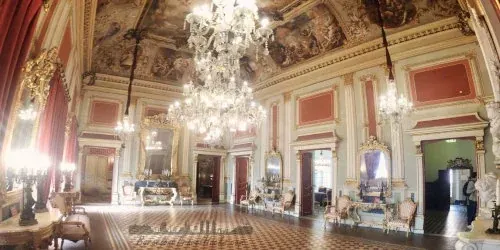Warning: Undefined array key "HTTP_ACCEPT_LANGUAGE" in /home/barcjkkl/public_html/App/Config/MySQL/language.php on line 32
Deprecated: explode(): Passing null to parameter #2 ($string) of type string is deprecated in /home/barcjkkl/public_html/App/Config/MySQL/language.php on line 36
History of Tarragona Museum Roman Circus & Praetorium
Discover the Tarragona 1st Century Roman Circus And Praetorium. opening hours, ticket options, top tips for visiting the Museum of History Tarragona (MHT)
About History of Tarragona Museum Roman Circus & Praetorium
The Tarragona Roman circus, Circo romano de Tarraco, and Roman Praetorium, Pretorio Romano de Tarraco are two conjoined roman ruins near to the Roman Amphitheatre. During the Middle Ages the Kings of Aragón redesigned it for use as a Royal Palace.
Tarragona Roman Circus History
The circus was the most popular mass spectacle in the Roman world because of the chariot races, pulled by two or four horses.
The building dates from the end of the first century AD, during the reign of Domitian, and was part of the large provincial monumental complex, of which it occupied the lower terrace.
The Roman circus of Tarraco had dimensions of approximately 325 meters in length and a width of between 100 and 115 meters. It was built on powerful cement vaults that fulfilled a double function: on the one hand, they were the foundation on which the steps, the stairs and the upper platform were based; on the other, they served as internal corridors that made it possible to distribute spectators throughout the building, much like a modern arena today. In this network of vaults rested the upper platform of the building and the bleachers, arranged along three of the sides, while in the fourth were the exit point of the carts.
The grandstand was separated from the arena (the space where the show took place) by a wall more than 2 meters high, the podium, which had the function of protecting spectators in the event of any kind of accident during the show. Approximately in the centre of one of the long sides of the circus, the northern one, and attached to the buildings that made up the provincial forum, was the pulvinar.
One of the short sides of the building was occupied by dungeons, in which twelve exit chambers were generally opened, six on each side of a main door. Recent archaeological excavations have located these structures in the basement of the current Tarragona City Council building. The prisons were flanked by a tower. The whole sector was known as the oppidum. The organizer of the games (editor spectaculorum), who had the honour of starting the races, Could view the races from a space on the terrace above the prisons, while the magistrates who controlled the race, the correct behaviour of the chariots and the order of arrival, a tribune (tribunal iudicum) was reserved for them.
Current data suggest that during the 5th century the building was lost, at least partially its original function. Some of the vaults that formed it came to be occupied as room spaces.
Tarragona Roman Condition Today
Much of the huge Arena has now been built upon by what is the old centre of modern Tarragona city. What remains are a corner of the circus, the gate and some long tunnels underneath.
Tarragona Roman Praetorium History
Around 73 AD, during the reign of Emperor Vespasian, the Provincial Forum was built in the upper part of the city. It had the function of running the province from a political and economic point of view. The governing body of the new administrative network was the Consilium Provinciae Hispaniae Citerioris (Provincial Council) of which the governor was an active part.
The site chosen to establish government offices was the highest part of the city, a state-owned space since its founding with a total area of about 7.5 hectares.
The Provincial Forum was divided into two terraces taking advantage of the unevenness of the terrain. On the upper terrace was located the imperial place of worship and below, the representation square. On a third terrace was the circus that, built a few years later, completed the monumental complex.
The representation square was the building from where the whole province was managed. There were spaces as important as the tabular (state archive) or the ark (state box). To facilitate access to the various sectors of the building, a series of side towers were enabled that served as stairwells.
The provincial complex was articulated in a unitary way through an axis of symmetry that, in a northwest / southeast direction, connected the temple of imperial worship, in the highest part, with the pulvinar of the circus by a processional route that crossed longitudinally the intermediate terrace. On both sides of this road were distributed a series of statues of which only the pedestals are preserved.
The Provincial Forum ceased to function structurally at the beginning of the 5th century. From that moment on, the administrative area was reduced to much smaller spaces that are, for now, unknown. In terms of architecture, most of the high-imperial buildings entered a continuous process of dismantling walls and the materials were reused in the construction of the civil and religious buildings of the late Roman and medieval Tarraco.
Tarragona Roman Praetorium Condition Today
What remains today is a side tower with large internal staircase used to connect the terrace levels of Roman Tarragona. Inside this space are preserved exhibits of statues, stone coffins and stone carvings. In this building it is possible to access the roof terrace viewpoint and look over modern day Tarragona and the roman circus and amphitheatre.
Image Gallery for Image Gallery For History of Tarragona Museum Roman Circus & Praetorium
Click on any of the 58 images to open full screen gallery player
Visiting History of Tarragona Museum Roman Circus & Praetorium
There is a ticket office in the circus building with access from the entrance near to the roundabout. You can buy a single ticket or a combined ticket for all MHT attractions. Discounts are available for over 65's, children and students. Although the circus and Praetorium are separate buildings they are interlinked by a tunnel and staircase so you can transfer between the two with a combined ticket.
- Tuesday to Friday: 09:00h to 20:30h
- Saturday: 09:00h to 18:30h
- Sunday and Holiday's: 09:00h to 14:30h
- Closed: Monday's and 5th April
- Open mornings only: 1st May, 24th June, 19th August, 11th September and 23rd September
- Tuesday to Friday: 09:00h to 19:00h
- Saturday: 09:00h to 18:30h
- Sunday and Holiday's: 09:00h to 14:30h
- Closed: Monday's, 24th December, 25th December, 26th December, 31st December, 1st January, 6th January, 1st November
- Open mornings only: 12th October, 6th December, 8th December
Tarragona Roman Circus and Praetorium Opening Hours
Summer: 1st April to 30 September
Winter: 1st October to 31 March
Free Entry:International museum day in May, 19th August, 18th September, 23rd September, 8,8 and 10th October. The last Tuesday of January, February, march, May, October, November and December.
Access closes 30 minutes before final closing time.
What to take with you for What to take with you for History of Tarragona Museum Roman Circus & Praetorium
Access to the Roman Tarragona Circus is via steps from Rambla vella. The tour route includes another flight of stairs to the Praetorium. The Praetorian can also be accessed from Plaza del Rei via a flight of stairs. Once inside the Praetorium there is a lift to access all floors including the roof viewpoint. To confirm accessibility call 977 242 220 or write to mht@tarragona.cat
There are no bicycle anchorage points near to the museum.
Large rucksacks and bags will not be permitted inside the museum, nor is there space in reception to leave them. I was allowed inside with my small 10L museum rucksack.
No need for headphones because there is no audio guide but there are information plaques explaining each exhibit.
History of Tarragona Museum Roman Circus & Praetorium Summary of Prices Summary of Prices
Getting to History of Tarragona Museum Roman Circus & Praetorium
Address: Rambla Vella 2, Tarragona, 43003
Map for History of Tarragona Museum Roman Circus & Praetorium
Weather for History of Tarragona Museum Roman Circus & Praetorium
Where to stay overnight near History of Tarragona Museum Roman Circus & Praetorium
9 Nearby Attractions to History of Tarragona Museum Roman Circus & Praetorium
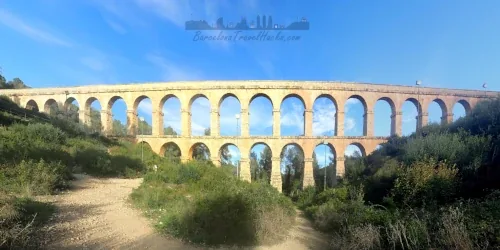
Tarragona Roman Ferreres aquaduct | Pont del Diable
Roman aqueduct crossing Barranc del Diable river valley on the outskirts of Tarragona. Visitor tips for walking along the top & getting to information
Read more >
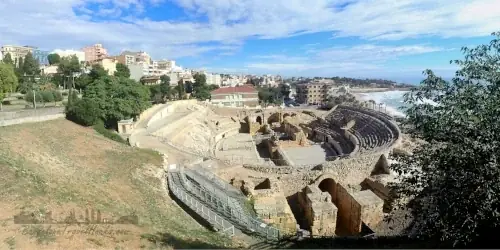
History of Tarragona Museum Roman Amphitheatre
Discover the Tarragona 2nd Century Roman amphitheatre. opening hours, ticket options, top tips for visiting the Museum of History Tarragona (MHT)
Read more >
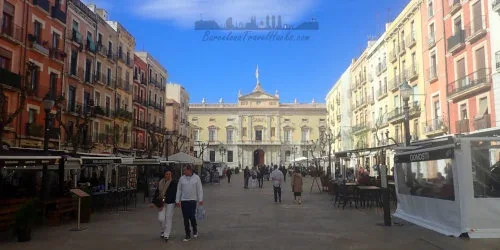
Tarragona Part Alta Historic City Centre
Walking route around Roman and Medieval walled historic centre of Tarragona, known as Part Alta because of it's location on a rocky 160m high plateau
Read more >
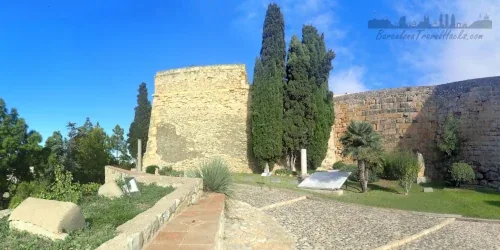
Tarragona Roman Wall And Gardens (archaeological walk)
Tips, tickets and opening hours for visiting the MHT museum of the old roman city wall, gardens & later medieval fortifications of cannons
Read more >
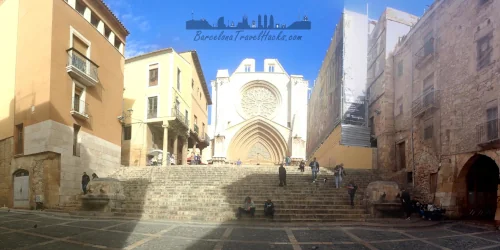
Catedral de Santa Tecla de Tarragona
Romanesque Cathedral or Moorish temple, cloister and Diocesan Museum, dating from 1154. Tickets and essential visitor information
Read more >
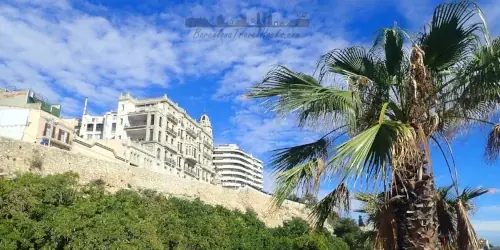
Tarragona Mediterranean Balcony | Balcó del Mediterrani
An urbanised cliff top pedestrianised boulevard with viewpoint over the Mediterranean coastline, Port, beach & Roman Ampitheatre
Read more >
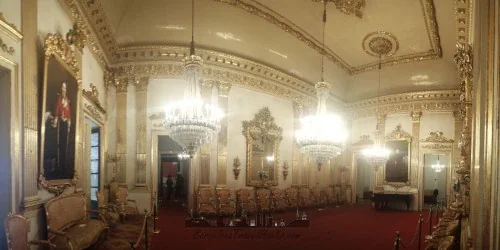
History of Tarragona Museum Casa Canals
18th Century Neoclassical stately house ceeded to Tarragona city by the Canals Family in 1992 and opened as a Museum. Famous for the grand ballroom
Read more >
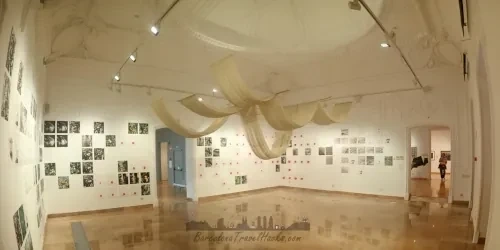
Modern Art Museum | Museo de Arte Moderno Tarragona
Modern & contemporary art from the 19th to 21st century contained inside three 18th century former noble houses called Casa Martí. Free Entry
Read more >
